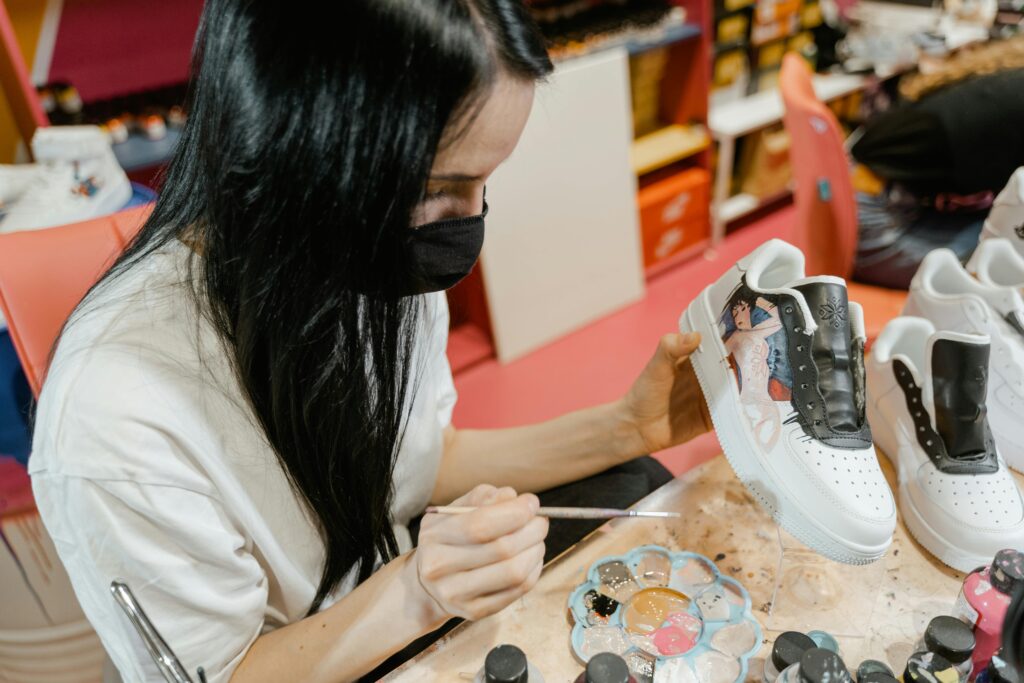Footwear design is a captivating and intricate field that merges creativity with technical expertise to bring stylish and functional shoes to the market. From the initial concept to the final product, the process of footwear design involves a delicate balance of artistry, innovation, and practicality.
In this comprehensive guide, we will explore the diverse aspects of footwear design, ranging from the essential skills required to succeed in the industry to the various career paths available to aspiring designers.
1. Creativity in Footwear Design
At the heart of footwear design lies creativity – the ability to envision unique and appealing shoe styles that resonate with consumers. Footwear designers draw inspiration from a myriad of sources, including fashion trends, cultural influences, and personal experiences, to create innovative and eye-catching designs. Whether it’s reimagining classic silhouettes or pushing the boundaries of avant-garde fashion, creativity is the driving force behind every successful footwear design.
2. Technical Skills and Expertise
While creativity fuels the design process, technical skills are equally crucial in transforming concepts into tangible products. Footwear designers must possess a deep understanding of materials, construction techniques, and manufacturing processes to ensure that their designs are not only aesthetically pleasing but also functional and comfortable. From pattern making to prototype development, mastering the technical aspects of footwear design is essential for creating high-quality shoes that meet industry standards.
3. Market Research and Trend Analysis
In the competitive world of footwear design, staying ahead of trends and consumer preferences is key to success. Designers must conduct thorough market research, analyze industry trends, and anticipate future demands to create designs that appeal to target audiences. By understanding the intersection of fashion, technology, and consumer behavior, footwear designers can develop innovative and commercially viable products that resonate with the market.
4. Collaboration and Communication
Effective communication and collaboration are essential skills for footwear designers working in a dynamic and fast-paced industry. Designers often collaborate with cross-functional teams, including product developers, materials specialists, and marketing professionals, to bring their designs to life. Clear communication, the ability to incorporate feedback, and a collaborative mindset are crucial for navigating the multifaceted process of footwear design and production.
5. Sustainable and Ethical Design Practices
As sustainability and ethical considerations become increasingly important in the fashion industry, footwear designers are embracing eco-friendly materials, ethical production practices, and circular design principles. Designing shoes with a focus on sustainability not only aligns with consumer preferences but also contributes to a more environmentally conscious and socially responsible approach to footwear design.
6. Specialization and Niche Markets
Within the field of footwear design, there are opportunities for specialization and targeting niche markets. Whether focusing on athletic footwear, luxury fashion, children’s shoes, or sustainable design, designers can carve out unique niches and develop expertise in specific areas of the industry. By identifying niche markets and catering to specific consumer needs, footwear designers can differentiate their brand and products in a competitive marketplace.
7. Career Paths in Footwear Design
The field of footwear design offers a diverse range of career paths for individuals with a passion for creativity and fashion. From entry-level design positions to senior design roles, there are opportunities to work in various sectors of the industry, including footwear brands, fashion houses, design studios, and retail companies. Some of the top roles in footwear design include footwear designer, product developer, materials specialist, brand manager, pattern maker, retail buyer, footwear merchandiser, footwear marketing manager, footwear sales representative, and e-commerce manager.
8. Emerging Trends in Footwear Design
As technology continues to disrupt the fashion industry, footwear design is also experiencing a wave of innovation and transformation. From 3D printing and sustainable materials to customization and digital retail experiences, emerging trends are reshaping the way shoes are designed, produced, and marketed. By staying abreast of these trends and embracing technological advancements, footwear designers can position themselves at the forefront of industry innovation.
9. Continuing Education and Professional Development
For aspiring footwear designers looking to enter the industry or established professionals seeking to advance their careers, continuing education and professional development are essential. By pursuing specialized courses, workshops, and certifications in footwear design, individuals can enhance their skills, expand their knowledge, and stay competitive in a rapidly evolving industry. Organizations like Yellowbrick offer online courses and certificate programs that provide valuable insights and practical skills for aspiring footwear designers.
10. Industry Insights and Networking Opportunities
Networking and staying informed about industry trends and developments are crucial for success in footwear design. Attending industry events, trade shows, and conferences can provide valuable networking opportunities, industry insights, and exposure to the latest innovations in footwear design. Building a strong professional network, staying connected with industry peers, and engaging with industry publications can help designers stay inspired, informed, and connected in the dynamic world of footwear design.
11. International Perspectives in Footwear Design
The global nature of the fashion industry offers footwear designers the opportunity to draw inspiration from diverse cultures, traditions, and design aesthetics. By exploring international perspectives in footwear design, designers can incorporate unique elements, textures, and motifs into their creations, creating shoes that resonate with a global audience. Embracing cultural diversity and cross-cultural influences can enrich the creative process and lead to innovative and inclusive designs.
12. The Future of Footwear Design
As the fashion industry evolves and consumer preferences shift, the future of footwear design is poised for innovation and transformation. From sustainable practices and digital technologies to personalized experiences and inclusive design, the future of footwear design holds exciting possibilities for designers who are willing to embrace change, push boundaries, and redefine the way shoes are created and consumed. By staying agile, adaptive, and forward-thinking, footwear designers can shape the future of the industry and drive meaningful impact through their creative vision and innovative approach to design.
Conclusion
Footwear design is a dynamic and evolving field that blends creativity, technical skill, and market awareness. Success in this industry requires designers to master both the artistic and practical sides of the craft while embracing sustainability, technology, and global influences. With diverse career paths and emerging trends, footwear design offers exciting opportunities for those ready to innovate and leave their mark on the industry.
Key Takeaways:
- Footwear design combines creativity, technical expertise, and functionality.
- Understanding materials, construction, and manufacturing is essential.
- Market research and trend analysis help designers stay competitive.
- Strong collaboration and communication skills are crucial in the design process.
- Sustainable and ethical practices are increasingly shaping the industry.
- Designers can specialize in niche markets like athletic, luxury, or eco-friendly shoes.
- The field offers varied career paths in design, marketing, sales, and e-commerce.
- Emerging trends include 3D printing, customization, and digital retail experiences.
- Continuing education and networking are key to career growth and industry relevance.
- Global and cultural influences can inspire innovative, inclusive footwear designs.
- The future of footwear design will focus on sustainability, personalization, and technology-driven innovation.
The world of footwear design offers a unique blend of creativity, technical skill, and market insights for aspiring designers. Key takeaways include the importance of creativity, technical proficiency, sustainable practices, and continuous learning in this dynamic industry.
To further enhance your skills and embark on a successful career in footwear design, consider exploring the FIT Footwear Business Foundations online course and certificate program offered by Yellowbrick.








